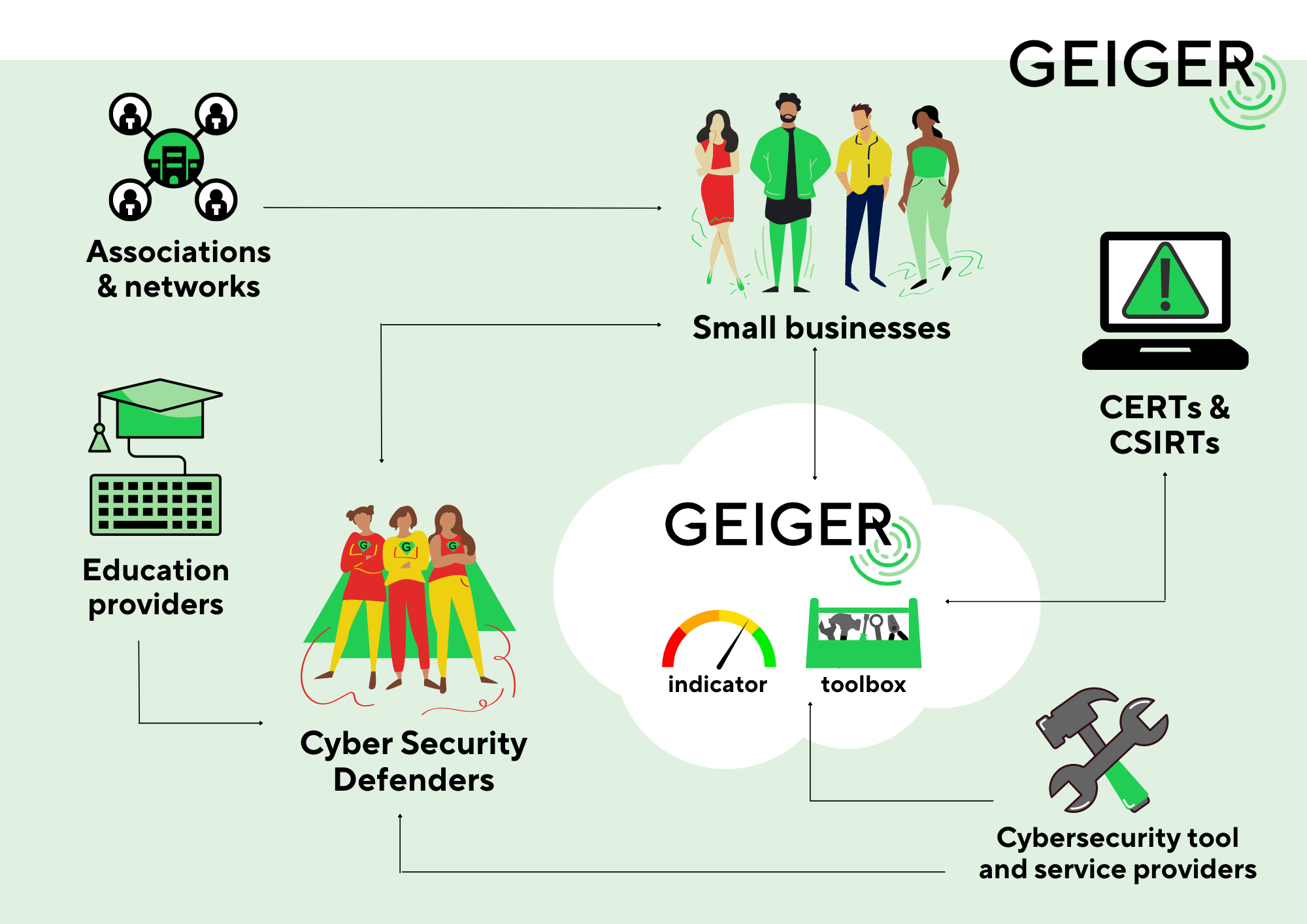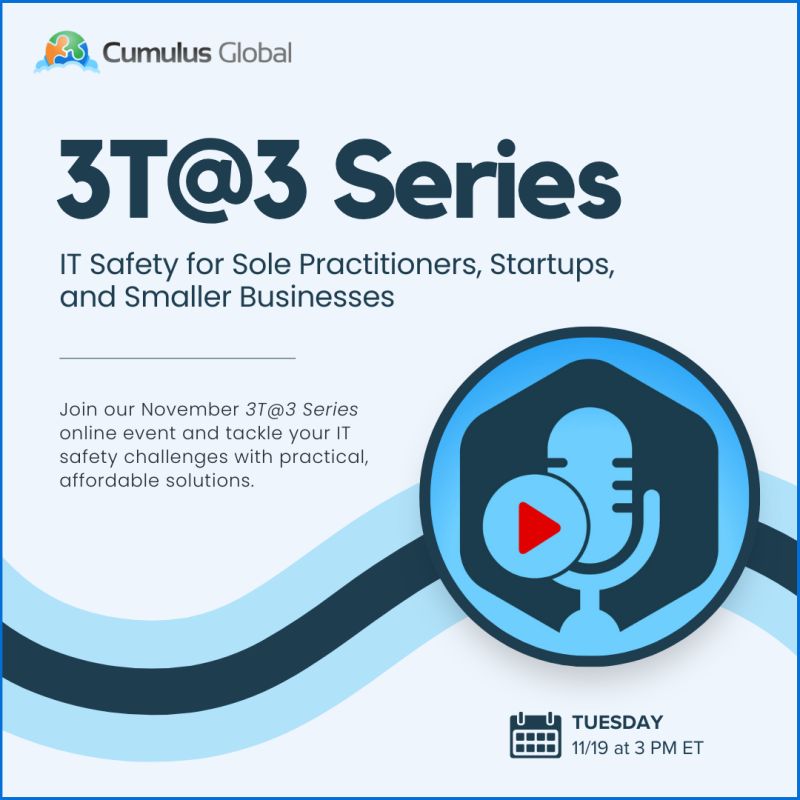In today’s digital age, cybersecurity is crucial. Especially for startups, protection is essential.
Affordable cybersecurity solutions can help startups safeguard their data without breaking the bank. Cyber threats are ever-evolving, and small businesses are often targets due to perceived vulnerabilities. Startups, with limited resources, need cost-effective ways to defend against these risks. Thankfully, there are many budget-friendly options available.
These solutions can offer robust protection while being easy on the wallet. Understanding these options is vital for any startup aiming to secure its future. In this blog, we’ll explore various affordable cybersecurity solutions tailored for startups. These options will help you keep your business safe and thriving without heavy expenses.

Credit: arcticstartup.com
Importance Of Cybersecurity For Startups
Startups often focus on growth and innovation. Cybersecurity might seem less important. But it is crucial. Cyber threats can harm a startup’s success. Hackers target startups due to their perceived lack of security. A single cyber attack can cause severe damage. It can lead to data loss, financial loss, and reputational damage.
Investing in cybersecurity protects your startup. It safeguards sensitive data. It also builds customer trust. This can set your startup apart from competitors. Let’s explore the impact of cyber attacks and common security threats.
Impact Of Cyber Attacks
Cyber attacks can disrupt your operations. They can cause financial losses. A breach can lead to loss of customer trust. This impacts your reputation. Recovery from a cyber attack can be costly. It can take time to restore normal operations.
Cyber attacks can also result in legal issues. Data breaches can lead to regulatory fines. This adds to the financial burden. Cybersecurity helps prevent these issues. It ensures your startup’s stability and growth.
Common Security Threats
Startups face various security threats. Phishing is a common threat. Hackers trick employees into revealing sensitive information. Malware is another threat. It can damage systems and steal data.
Ransomware is a growing concern. Hackers encrypt data and demand payment. Weak passwords also pose a threat. Hackers can easily guess them. Ensuring strong, unique passwords is crucial.
Another threat is insider attacks. Employees or contractors might misuse access. Implementing strict access controls helps prevent this. Regular training and awareness can also reduce the risk.

Credit: swanswater.com
Building A Cybersecurity Plan
Creating a cybersecurity plan is like building a fortress around your startup’s digital assets. Without it, you’re leaving the doors wide open for cybercriminals. A well-structured plan not only protects your data but also ensures the longevity of your business. Let’s dive into the essentials of building a cybersecurity plan, focusing on assessing risks and setting priorities.
Assessing Risks
First things first, you need to know what you’re up against. Think of this as taking inventory before a big move. Start by identifying all your digital assets. This includes customer data, financial records, and intellectual property. Once you have a list, ask yourself: What would happen if this information was compromised?
- Data Sensitivity: Determine the sensitivity level of your data. Is it confidential customer information or internal memos?
- Potential Threats: Identify potential threats. These could be external hackers, disgruntled employees, or even natural disasters.
- Vulnerabilities: Look for vulnerabilities in your current system. Are your passwords strong enough? Do you have outdated software?
By assessing these risks, you can understand where your startup is most vulnerable. This step is crucial because it lays the groundwork for your entire cybersecurity strategy.
Setting Priorities
Once you know your risks, it’s time to set priorities. Think of it like packing for a trip – you need to decide what’s essential. Not all risks are created equal, and you can’t tackle everything at once. Here’s how to set your priorities:
- High-Impact Risks: Focus on risks that could have a significant impact on your business. For instance, losing customer data could result in legal trouble and loss of trust.
- Quick Wins: Identify areas where you can make improvements quickly and easily. This could be something as simple as updating your passwords or installing antivirus software.
- Long-Term Goals: Plan for the future by setting long-term cybersecurity goals. This might include employee training or investing in more robust security systems.
Setting priorities helps you allocate your resources effectively. It ensures that you’re addressing the most critical risks first, without getting overwhelmed by the sheer number of potential threats.
Building a cybersecurity plan might seem daunting, especially for a startup with limited resources. But remember, even small steps can make a big difference. By assessing risks and setting priorities, you’re taking the first crucial steps towards a safer digital environment for your business.
Cost-effective Tools And Software
Startups often struggle to find affordable cybersecurity solutions. Many tools and software packages can be costly. But there are cost-effective options available. These tools can help protect your startup from cyber threats without breaking the bank. In this section, we will explore both free and affordable paid solutions.
Free And Open Source Solutions
Free and open-source cybersecurity tools can be a great option. They provide essential protection without any cost. For example, ClamAV is a free antivirus tool. It helps detect and remove malware. Another good option is Snort. Snort is an open-source network intrusion detection system. It monitors network traffic and alerts you to potential threats.
OpenVAS is another valuable tool. It is a free vulnerability scanner. OpenVAS identifies security weaknesses in your systems. These tools can provide a strong foundation for your startup’s cybersecurity. And they don’t require a financial investment.
Affordable Paid Options
Some paid cybersecurity tools are affordable for startups. They offer advanced features at a reasonable price. For example, Bitdefender offers affordable antivirus solutions. Bitdefender provides strong protection against viruses and malware.
Another option is Malwarebytes. It offers a cost-effective plan for small businesses. Malwarebytes protects against malware, ransomware, and other threats. For network security, consider using PfSense. PfSense is a low-cost firewall solution. It helps protect your network from cyber attacks.
These affordable paid options provide additional security features. They are more advanced than free tools. Investing in these solutions can help ensure your startup stays safe.
Implementing Strong Password Policies
Implementing strong password policies is crucial for startups. Weak passwords can lead to data breaches and security risks. Strong password policies ensure your data remains safe. They protect sensitive information from unauthorized access. This section will cover affordable cybersecurity solutions for startups. Focus on strong password policies.
Password Management Tools
Password management tools help create and store strong passwords. They generate complex passwords that are hard to guess. These tools save time and reduce the risk of weak passwords. Many password managers offer affordable plans for startups. Some popular options include LastPass, 1Password, and Bitwarden. Using a password manager ensures all your passwords are secure.
Two-factor Authentication
Two-Factor Authentication (2FA) adds an extra layer of security. It requires two forms of identification to access an account. This could be a password and a code sent to your phone. 2FA makes it harder for hackers to access your data. Many platforms offer 2FA as a free or low-cost feature. Enabling 2FA on all accounts is a simple way to boost security. It’s an essential step for startups to protect their information.
Employee Training And Awareness
In the rapidly evolving world of cybersecurity, startups often find themselves at a crossroads. With limited budgets and resources, how can they protect their valuable data from cyber threats? The answer lies in one of the most cost-effective solutions: Employee Training and Awareness. By educating your team about potential threats and best practices, you can create a robust first line of defense without breaking the bank.
Phishing And Social Engineering
Phishing and social engineering attacks are among the most common and dangerous threats faced by startups. These tactics deceive employees into revealing confidential information. Imagine receiving an email from what appears to be a trusted source, but in reality, it’s a trap. Scary, right? Here’s where training comes in.
Phishing involves fraudulent emails that appear legitimate. Employees need to know how to spot these deceptive emails. Look out for:
- Suspicious email addresses
- Urgent or threatening language
- Unexpected attachments or links
Social Engineering is a broader concept. It manipulates people into giving up confidential information. Teach your employees to:
- Verify the identity of unknown callers or visitors
- Be cautious of unsolicited requests for sensitive information
- Report suspicious activities immediately
Sharing real-life examples and anecdotes during training sessions can make these concepts more relatable and easier to understand.
Regular Security Drills
Just as fire drills prepare us for emergencies, regular security drills can prepare your team for cyber threats. These drills should simulate real-life scenarios, helping employees practice their response to potential attacks. Think of it as a game of “what if.” What if someone tries to steal company data?
Here are some key components of effective security drills:
| Component | Description |
|---|---|
| Scenario Simulation | Recreate phishing attacks, data breaches, or malware infections. |
| Role Play | Assign roles to different team members to handle various aspects of the attack. |
| Feedback Session | Discuss what went well and areas for improvement. |
Conducting these drills regularly ensures that your employees remain vigilant and can respond swiftly and effectively to any cyber threat. Plus, it adds a bit of excitement to the work routine, doesn’t it?
In conclusion, investing in Employee Training and Awareness is a smart move for startups. It’s not just about saving money; it’s about building a culture of security. After all, a well-trained team is your best defense against cyber threats.
Securing Remote Work Environments
In today’s digital age, securing remote work environments has become more critical than ever. As startups grow and adapt to remote work models, ensuring that employees can work safely and securely from anywhere is essential. This section will explore affordable cybersecurity solutions for startups, focusing on VPNs and secure connections, as well as remote access policies. These measures are crucial for protecting sensitive data and maintaining business continuity.
Vpns And Secure Connections
One of the most effective ways to secure remote work environments is by using a Virtual Private Network (VPN). A VPN creates a secure, encrypted connection between an employee’s device and the company’s network. This ensures that any data transmitted over the internet remains private and protected from potential cyber threats.
- Encryption: VPNs use encryption to scramble data, making it unreadable to anyone who might intercept it. This is particularly important when employees access company resources over public Wi-Fi networks.
- Access Control: VPNs can restrict access to specific resources, ensuring that only authorized users can connect to the company network.
- Cost-Effective: Many VPN providers offer affordable plans tailored for startups, making it a cost-effective solution for securing remote work environments.
By implementing a VPN, startups can significantly enhance their cybersecurity posture while enabling employees to work remotely without compromising on security.
Remote Access Policies
In addition to using VPNs, establishing robust remote access policies is vital for maintaining a secure remote work environment. Remote access policies provide guidelines for employees on how to securely access company resources from remote locations. Here are some key aspects to consider:
- Authentication: Ensure that employees use strong, unique passwords and enable multi-factor authentication (MFA) for an added layer of security.
- Device Security: Require employees to keep their devices updated with the latest security patches and use antivirus software to protect against malware.
- Data Handling: Educate employees on how to handle sensitive data responsibly, such as avoiding the use of personal devices for work-related tasks.
Creating clear and concise remote access policies helps to establish a secure framework for remote work, minimizing the risk of data breaches and other cybersecurity incidents.
In conclusion, securing remote work environments doesn’t have to be expensive or complicated. By implementing VPNs and establishing comprehensive remote access policies, startups can safeguard their data and ensure a secure and productive remote work experience for their employees.
Data Backup And Recovery Plans
Startups often operate on tight budgets, making cybersecurity a challenge. However, ensuring your data is safe is crucial. One key aspect of cybersecurity is having a solid data backup and recovery plan. This plan ensures that, in case of a cyberattack or a system failure, your data is not lost, and your operations can continue with minimal disruption. Let’s dive into some affordable and effective solutions for data backup and recovery specifically tailored for startups.
Automated Backup Solutions
Manually backing up data can be time-consuming and prone to errors. That’s where automated backup solutions come in handy. These tools regularly save copies of your data without you having to lift a finger.
- Cloud-Based Backups: Services like Google Drive, Dropbox, and OneDrive offer affordable plans for startups. They automatically sync your files, ensuring you always have a backup ready.
- Dedicated Backup Software: Tools like Acronis or Backblaze provide automated backup solutions tailored to small businesses. They run in the background, continuously backing up your data.
- Version Control: Some tools, like GitHub, not only backup your data but also keep track of different versions. This is particularly useful for development projects.
Automating backups ensures that your data is consistently protected, allowing you to focus on growing your business.
Disaster Recovery Strategies
Imagine waking up to find your data compromised or lost. It’s a nightmare scenario, but with the right disaster recovery strategies, you can bounce back swiftly.
- Identify Critical Data: Not all data is created equal. Identify which data is crucial to your operations and prioritize its recovery.
- Create a Recovery Plan: Outline the steps you need to take in case of data loss. This plan should include contact information for key personnel, steps to restore data, and how to communicate with stakeholders.
- Regular Testing: A plan is only as good as its execution. Regularly test your disaster recovery plan to ensure it works when you need it most.
- Offsite Backups: Ensure that your backups are stored offsite or in the cloud. This way, they are safe even if your physical location is compromised.
By having a well-thought-out disaster recovery plan, you can minimize downtime and ensure your startup remains resilient in the face of unexpected challenges.
In conclusion, affordable cybersecurity solutions are within reach for startups. By implementing automated backup solutions and robust disaster recovery strategies, you can protect your data and ensure business continuity. Remember, the key is consistency and preparation. Stay ahead of potential threats and keep your startup’s data safe and secure.
Regular Security Audits
In the world of startups, balancing budgets while ensuring robust cybersecurity can be a tightrope walk. Yet, one cannot afford to skimp on security. This is where regular security audits come into play. These audits are not just for the big guns; they are crucial for startups too. By routinely checking your security measures, you can catch vulnerabilities before they become major headaches. Let’s dive into two primary types of audits: internal audits and third-party assessments.
Internal Audits
Internal audits are your first line of defense. Think of them as regular check-ups for your company’s health. Conducting these audits in-house allows you to have a close, personal look at your security practices. Here’s a simple breakdown:
- Frequency: Conduct these audits at least once every quarter.
- Scope: Check user access controls, software updates, and data protection measures.
- Team: Assign a small team of trusted employees with good knowledge of your systems.
Remember, internal audits help you stay in tune with your own security protocols. It’s like cleaning your room; you know where everything is and can spot issues quickly.
Third-party Assessments
While internal audits are great, sometimes you need an outside perspective. This is where third-party assessments come in handy. These assessments are like having a fresh pair of eyes to spot what you might miss.
| Aspect | Details |
|---|---|
| Frequency | Annually or bi-annually |
| Scope | Comprehensive review, including penetration testing and compliance checks |
| Providers | Specialized cybersecurity firms |
These assessments can be a bit more costly, but the investment is worth it. Imagine finding a leak in your boat before it sinks – that’s the kind of value you get from third-party assessments. Plus, they often provide detailed reports and actionable insights, which can be a game-changer for tightening your security measures.
In conclusion, whether it’s through internal audits or third-party assessments, regular security audits are indispensable. They ensure your startup is not just afloat but cruising smoothly in the vast ocean of digital threats. So, schedule those audits, stay vigilant, and keep your cybersecurity game strong!

Credit: www.cyber-geiger.eu
Frequently Asked Questions
How Much Does Cyber Security Cost For A Small Business?
Cyber security for a small business typically costs between $1,000 and $5,000 per year, depending on needs and services.
How Much Is Crowdstrike For Small Business?
CrowdStrike pricing for small businesses starts at around $8. 99 per endpoint per month. Costs vary based on features and services. For exact pricing, contact CrowdStrike directly.
Do Startups Need Cyber Security?
Yes, startups need cyber security. Protecting sensitive data and maintaining customer trust is crucial. Cyber attacks can harm businesses. Implement robust security measures.
What Are The 5 C’s Of Cyber Security?
The 5 C’s of cyber security are Change, Compliance, Cost, Continuity, and Coverage. They help protect against cyber threats.
Conclusion
Finding affordable cybersecurity solutions is crucial for startups. Protecting data ensures business success. Simple steps can make a big difference. Implement basic security measures. Regularly update software to prevent breaches. Educate employees on cybersecurity practices. Consider budget-friendly tools and services.
Prioritize cybersecurity now to avoid costly issues later. Your startup’s future depends on strong protection today. Stay proactive and secure your growth.

